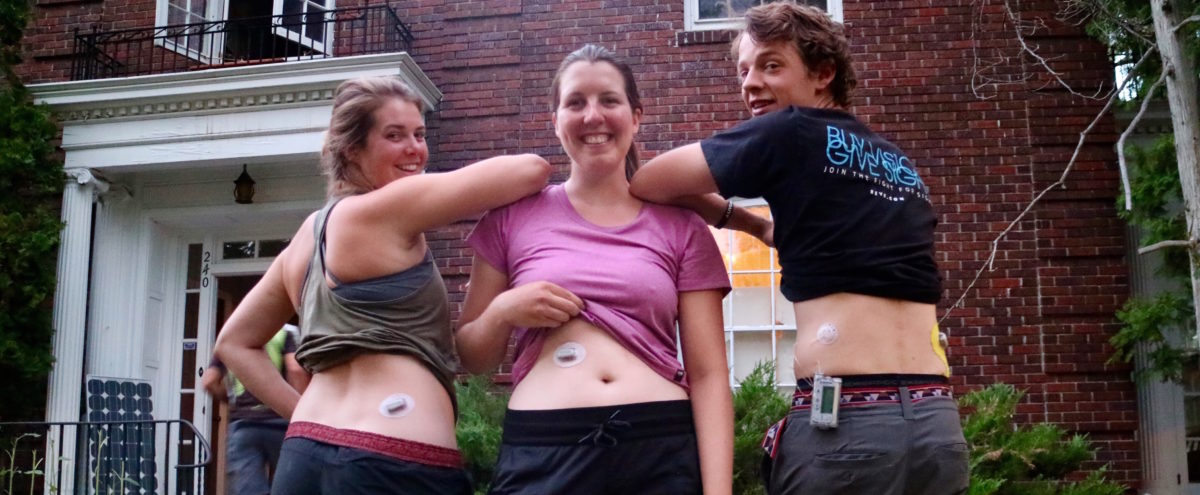What Cycling Really, Really Far Taught Us About Our Type 1 Diabetes
Erik and I only did one true training ride before cycling across the country on Adventure Cycling’s TransAmerica Trail. Around this time a year ago, we hopped on the Metro-North with a few friends from our type 1 diabetes Meetup group and headed to Peekskill, New York.
I remember how our insulin pumps malfunctioned at the same time on the train ride. Time constraints forced us to double task. As we were talking to a fellow cyclist, we applied new pods to our bare skin like clockwork. It didn’t seem to faze him because as it turns out, his wife has type 1 diabetes.
We got off the train, hiked up Bear Mountain and proceeded to bike 55 miles back to Manhattan. No big deal or anything.
Actually, scratch that. It was a huge deal.
Both of our blood sugars kept dropping and it seemed no amount of granola bars and gummy bears would keep our numbers stable.
We stopped.
We ate.
We stopped.
We ate.
We stopped.
We ate.
You get it.
It was dark by the time we finally crossed the George Washington Bridge into the city. We rode across it with giddy excitement for our upcoming cross-—diabetes-wise.
But we made it work. Through 3 a.m. Dexcom alarms that probably annoyed the hell out of Taylor—the only light sleeper of our trio, through dehydration and altitude inflicted high blood sugars, through an elevated A1C, roadside Omnipod malfunctions, heat waves and bad insulin, we dipped those damn tires in the Pacific. We learned a ton about how to manage this condition on the trip and are now so much more confident about handling diabetes on the road because of it.
We learned it’s better to carry more water and food than less.
We learned gas stations are great places to ship medications since they’re open late and have plenty of refrigerators.
We learned that after a long day of cycling, putting your foot down will cause your blood sugar to skyrocket like a switch. Raising your basal rate a few hours before you plan to stop biking helps.
If you cliff dive wearing an Omnipod, it WILL fall off —which is why there are two Omnipods at the bottom of a swimming hole at Missouri’s Johnson’s Shut-Ins State Park.
Higher elevation means higher blood sugars.
Heat truly can render your insulin unusable. Keep it under a frozen water bottle in your food bag.
If you want to lower your blood sugar STAT, just drink a lot of water, take a lot of insulin and pedal your heart out.
Gummy bears are probably the only low snack that won’t melt in the summer heat.
You never know where you’ll find your next supply of medications. Like, I don’t know, maybe in a roadside drug trade with a cyclist with type 1 diabetes (T1D) you meet in the middle of nowhere.
In what seems like a mirage, I meet Justin and Ashtyn Mann of the LIVEabetes Tour in Kansas. The siblings were cycling the TransAmerica eastbound, raising money for diabetes research. Justin, also someone with type 1 diabetes, was out of Dexcom continuous glucose monitor sensors and I had extra. I was running low on insulin and he had extra vials. So we traded! Video by Ashtyn Mann
Next month, Erik and I are heading to Alaska where we’ll be riding 1,000 miles.
No big deal or anything.
On their Alaska bike trip next month, Annalisa and Erik will be taking pictures of the people they meet along the way in a series called Miles of Portraits. Following the trip, they’ll be creating a magazine and film. They just launched a Kickstarter to help fund production and have until June 30th to reach their funding goal. Show them some love!




